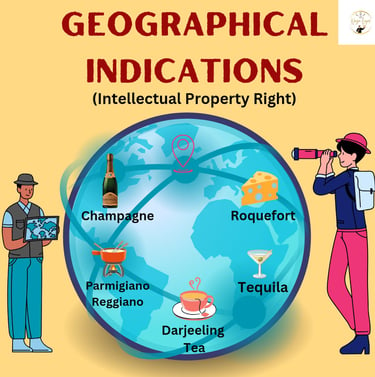Geographical Indications: Preserving Authenticity and Quality of Products


Introduction
In the realm of intellectual property rights, Geographical Indications (GIs) play a pivotal role in safeguarding the unique attributes of products closely tied to their country of origin. These indications provide vital protection against unauthorized use, ensuring that consumers receive authentic, high-quality goods with distinct regional characteristics. But what exactly are GIs, and why are they gaining increasing importance? Let's delve into the world of Geographical Indications and their significance.
Understanding Geographical Indications
Geographical Indications, or GIs, are a form of intellectual property right that serves to identify products as originating from a specific geographic region. This identification is crucial as it ties the product's reputation, quality, and characteristics directly to its place of origin. By associating the product with its geographical source, GIs provide consumers with the assurance that they are purchasing an item with unique attributes tied to its region.
Examples of Geographical Indications
Several well-known examples highlight the concept of Geographical Indications:
- Champagne: The effervescent wine synonymous with celebration is designated as Champagne when produced in the Champagne region of France.
- Parmigiano-Reggiano: This renowned cheese comes exclusively from specific provinces in Italy, maintaining its authenticity and quality.
- Darjeeling Tea: Grown in the Darjeeling district of India, this tea boasts distinct flavors and characteristics rooted in its geographical origin.
- Roquefort: Hailing from France, Roquefort cheese is made from sheep's milk and embodies the flavors of its region.
- Tequila: Distilled from the blue agave plant in Mexico, Tequila holds a unique place among spirits.
The Potential of Geographical Indications
The future of Geographical Indications is promising. In a global market where authenticity and quality are increasingly valued by consumers, GIs can play a vital role in product differentiation. Moreover, these indications contribute to the preservation of traditional production methods and stimulate regional economies, thereby supporting rural development.
Challenges and Prospects
Despite their potential, Geographical Indications face challenges that could impact their growth. Enforcing GIs, achieving universal recognition, and addressing potential disputes are all hurdles that need to be navigated. However, given the growing demand for authentic and distinctive products, the outlook for GIs remains positive.
Conclusion
Geographical Indications serve as a bridge between the products we enjoy and the regions they hail from. By ensuring the preservation of authentic attributes and maintaining consumer trust, GIs contribute to both the protection of intellectual property rights and the promotion of distinctive regional products. While challenges exist, the rising appreciation for uniqueness and authenticity indicates a promising future for Geographical Indications in the global market.
Sweety Singh
